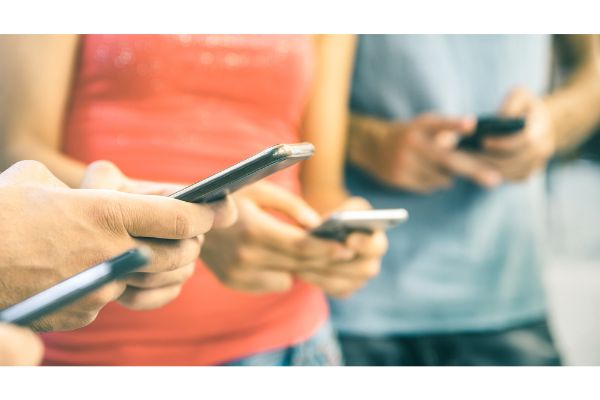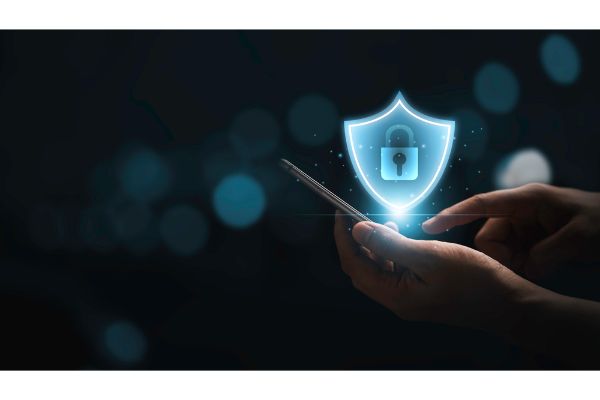Disclaimer: This post may contain affiliate links, meaning we get a small commission if you make a purchase through our links, at no cost to you. For more information, please visit our Disclaimer Page.
Internet access is becoming a more essential tool to have as the years go by, with more and more services for both business and entertainment moving to primarily online models of delivery. For the most part, individuals and families will get online by using a standard modem and router in concert with one another.
The modem typically comes from your internet service provider, and this business sends a signal to your home that gives you a maximum speed based on the package you purchase. In turn, the router sends that signal out so that it can reach all the devices in your home. Workplaces have similar setups, though they may have slightly different equipment to deal with several networked computers.
If you can’t get online using a Wi-Fi connection, you can still get access to the internet through a hotspot. There are a few devices that can create a hotspot for you, but one of the most common ones is your own smartphone. Users who might be new to hotspots may wonder precisely what goes on if they decide to share it with others.
We will get into that topic, and we will also cover the potential risks of giving your hotspot access to someone else. Further, we’ll delve into the specifics of what some other users on your hotspot might see, how you may be able to clear out hotspot history, and things you can do that might make your hotspot access more secure.
Table of Contents
What Happens When You Share Your Hotspot?
A hotspot is something that a device creates in order to give other devices internet access in places that don’t typically have it. It does this by creating a Wi-Fi network of its own using cellular data. This is why one of the most common ways to get a hotspot at all is through your phone.
Because your smartphone will have cellular data active even when it is outside of Wi-Fi range, it can use that connection to create a virtual Wi-Fi network to which other devices can connect. Once it does, those things will feed off the cellular data connection in order to maintain their access to the internet.
Technically, you share your hotspot with your own devices already when you turn it on and want to establish a connection. If your plan is to share your hotspot with someone else, the principle here remains the same. Your hotspot will allow another person’s devices to connect to it, just as your own devices look for and establish a connection.
There may be a client limit on just how many devices can use your hotspot at once. In almost all cases, there is a data limit. This caps how much of your cellular data that you can use for hotspotting within a given billing cycle. All devices share data from this limited pool, so it is important to keep track of how many things are using that connection.
Can Sharing Hotspot Be Dangerous?
Yes, there can be some risks to sharing your hotspot with someone else. This applies to sharing your internet connection with anyone in any way, and many of the guidelines you should follow here would be the same.
Although it is not a risk per se, the most obvious problem here would be using up your allotted hotspot data. Depending on the limits that your provider sets, they might have access to much more of your data than you realize at first.
This means that there is the potential for the other users to take up a lot of the traffic on your plan that you have for a particular billing cycle. Keep in mind that this applies to all connected devices, and you could find that the remaining data you have for the rest of the cycle goes down by quite a bit.
If you really want to share your connection, it may be best to check what kinds of activities the other person will be doing on it, and you may wish to inquire about the length of time for which they need the connection.
For other reasons, it is best to share your hotspot connection only with people you know and trust. If you do not know someone well, and if they are skilled in different areas of computing, they may be bad actors who can try to perform hacks on your device using your own network. When you craft a hotspot, any devices that are connected to it will share a local area network, often called a LAN.
Because of the nature of this connection, it is possible for another person to initiate a LAN attack on your device. The end result of this will depend on what the other person wants to do, but it could be very compromising for you.
In general, people need some knowledge and skills in order to do this, but it is still best to take no chances. If you do not know someone well, don’t allow them to share the hotspot you set up.
In addition to using up all of your data, their activity on your network could slow down your connections drastically. Whether you’re planning to use your hotspot for work or entertainment, this means that everything you might want to do could be impacted by another person’s use.
Even if you disable the hotspot in order to refresh it, you may need to wait a while for the cellular network to catch up and regain its full speed. If you need to do important things on short notice, it is best to just use the hotspot for your own tasks alone.
Finally, you are responsible for another person’s traffic on your network. This is true not only in how much of your own data that they use. It also applies within a legal framework, too.
If the person on your network decides to view or download protected intellectual property or objectionable material, even without your knowledge, this activity could be traced back to your network.
Should that happen, you would be on the hook for any legal problems that might arise from it. All traffic is routed through your connection, and you are the owner of that connection in a real and legal sense. Again, this all comes back to placing your trust in another person who might want to use your Wi-Fi hotspot. If you are in any doubt whatsoever, we recommend that you not share the connection at all.
While it may seem easy enough to explain any situation away, there won’t necessarily be any kind of proof that backs your version of events. All of the known traffic will come from your connection, and it will have your authorization on it.
Because a single user can have multiple devices connected to one hotspot at a time, there is little recourse for making any kind of differentiation between yourself and a second user when it might count most.
Can Someone See What I Do on My Phone Through Hotspot?
There may be some ways that someone else can see what your phone activity is via your hotspot. However, others cannot see what you are doing simply by connecting to your hotspot. In fact, as the owner of the connection, it is more likely that you can see what they are doing.
However, even this would still require some extra setup on your part, and you would likely need to be running some kind of software to see the specifics of any activity.
When a person connects to your device via an open hotspot, they are simply using your credentials and bandwidth to access the internet. Absent any additional setup, which would almost certainly require some kind of access to your hotspot device itself, they cannot see what your phone or other activity should be.
Is There a Way To Clear My Hotspot Activity?
Hotspot activity works a bit differently from your usual internet activity. However, if you want to clear it, you’ll need to reset the statistics of its usage. To do this, you can go into the ‘Settings’ on your phone and check out the ‘Mobile Data Usage’ page.
From here, you should be able to perform a reset that wipes the current statistics. For history and other such things, you can also go into your phone’s storage and clear out many of the temporary files.
However, some of your mobile device activity could be synced to the computer of your choice, too.
4 Tips To Make Hotspots More Secure
Given the potential dangers we’ve discussed above, hotspot security is an important part of its usage. Here are a few tips that you can use to help make your connection more secure:
1. You should be able to turn off the setting that allows others to join. In this case, no random devices can join your network without your permission.
2. Set a strong password for your hotspot, the same way you would do it for any other Wi-Fi connection you set up. Users who want to connect will need to know this password.
3. On a related note, make sure you use the strongest encryption available on your device for your hotspot.
4. For an added bit of protection, you can make the network’s SSID a random string instead of typical dictionary words or other things.
Can I Set My Hotspot To Turn Off Automatically?
Yes, you should be able to set the hotspot to shut itself off. To check this, go into your phone’s ‘Settings’ and find a heading similar to ‘Wireless and Networks’.
Once here, check for options in ‘Tethering and Hotspots’. You’ll want to find any features that allow you to enable a timeout on the hotspot connection.
Set it to whatever you wish, and the device should close the connection after the allotted time is up.
Conclusion
Hotspots are a convenient way to make sure that you are never without internet access. You still need cellular data, but almost everyone will have that when they are out and about today. Although there are some risks involved, you can mitigate these issues by setting up strong security for your hotspots. Additionally, only share your connection with people you trust.


